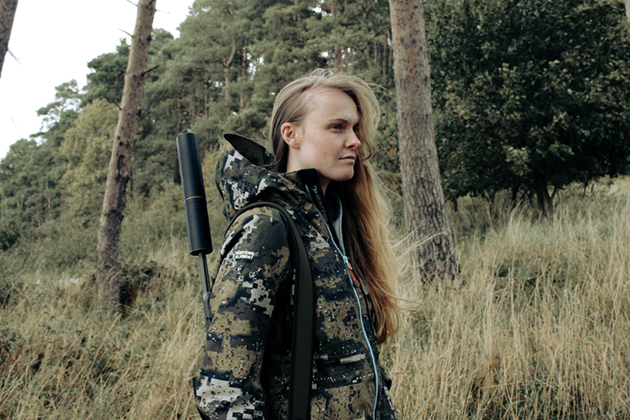The wildlife artist Katie Hargreaves explains how taking up the rifle herself has helped deepen her connection with the natural world and the creatures that inhabit it.
It may have been seven years since I started my business but the job of wildlife artist has been around for at least 64,000. Although I’ve never drawn on the side of a cave, there is a resemblance: the hunt, the food and then drawing it all in charcoal. My work celebrates the wildlife we live among, capturing the artistry of the hunt and bringing the outside in.
The art of hunting and hunting art came into my life at a similar time. I had dabbled in art at school but it was never the plan or the dream to become a professional artist. It all started when, on a tight budget and with an over-confident mindset, I decided the perfect present for my stalking boyfriend would be a deer portrait. After a rudimentary google of ‘deer’, I proceeded to paint a fallow buck in acrylic. It was not a bad result considering it was my first attempt at any animal.
Following a series of fortunate events, I suddenly found myself in the middle of the fieldsports industry, meeting people who wanted to give me their money in exchange for some charcoal on a sheet of paper. I still can’t believe how cool that is and how lucky I am to be able to say I make a living creating it.
The last thing any hunter wants is to injure and animal and cause suffering
That same boyfriend, Dan, introduced me to deerstalking. I must have clocked up half-a-dozen outings before having my first shot at a deer. We’d been stalking for three days and seen hardly any bucks, but as we were driving away thinking ‘better luck next time’, everything fell into place. A young roebuck was browsing a hedgerow 60 metres from the singletrack Norfolk road: almost textbook roe stalking.
Crawling in from behind the Land Rover, Dan set up the sticks for me to stand behind. There was no backstop, meaning no earth behind the deer to stop the bullet, so to create a safe shot, standing it was. My heart was pounding in my ears, the voice in my head trying to remind me to breathe and focus. After a quick ‘hey’ the buck stood tall and broadside, looking towards us; I knew it was now or never. My reaction has not changed to this day. I don’t get the buzz that some people describe; I feel almost overwhelmingly concerned until I know the deer is dead. The last thing any hunter wants is to injure an animal and cause suffering.

Wildlife artist Katie Hargreaves’ ‘Full steam ahead’
The reason I love stalking is because it is in the heart of nature, slowing down the pace of modern life and tuning into the hunter-gatherer instinct. Deer need to be managed by humans for the sake of our safety, their population health and for biodiversity. To be a part of the effort to ethically manage them with respect makes me feel really humble. And, of course, the venison is a great by-product. Being a hunter myself gives me the edge when it comes to understanding my audience. I appreciate why they would buy my artwork and what particular species will excite their interest. Not only can I connect more with my clients but the same is true with my subjects.
Why stalking helps the work on a wildlife artist
I take a great amount of pleasure in watching these amazing wild creatures and try to do them justice within my work. As much as I can I’m stalking with a camera, taking my own photographs to work from. Knowing how these animals move, smell and interact allows me to give an authentic perspective, and it’s so much more meaningful to me when I experience it first-hand. From the outside, it may seem like it is necessary to know someone to start deerstalking but it really is an extremely welcoming sport.
A common thread I’ve noticed is the incredible knowledge, pride and care that stalkers have for the deer they manage. I am still very much a beginner compared with many stalkers but I feel every time I am out in their world I’m learning more. Out of all the fieldsports, I think stalking is one of the more down-to-earth disciplines. It brings you to such a quiet place, literally and mentally, and allows an almost meditative observation of the world around you. It feels like such a natural and fundamental pursuit, and connects us back to our ancestors who, thankfully, also valued good hunting art.
TOP TIP: Google, go to game fairs and shooting shows and talk to people, and try a simulated stalking day.
To learn more about wildlife artist Katie Hargreaves and her work, click here.
If you enjoyed this feature, take a look at the other Sporting Diana’s on our website, including Clare Brownlow, vet Lucinda Ticehurst and Tania Coxon.





